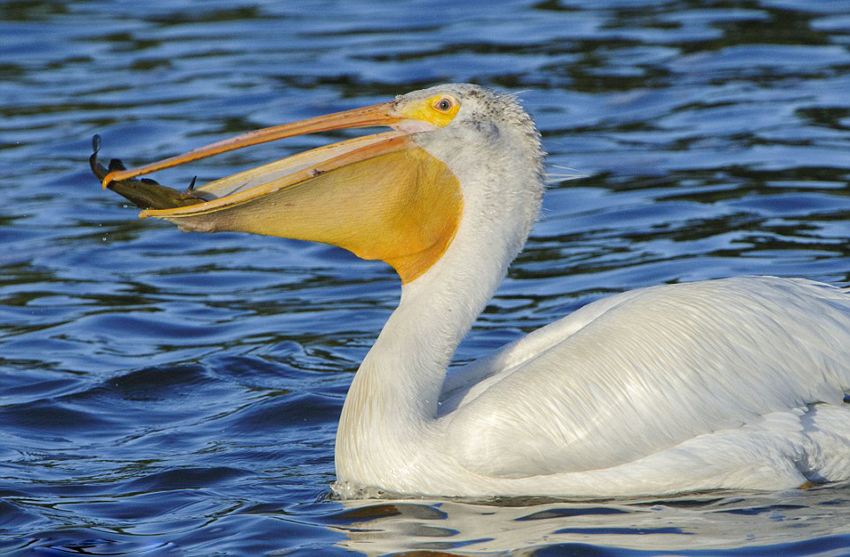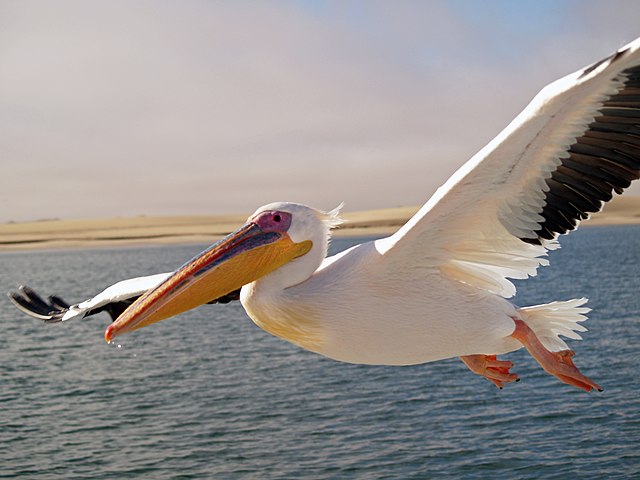Pelecanidae
IUCN
LCBasic Information
Scientific classification
- name:Pelecanidae
- Scientific Name:pelican, owl, taohe, gannet, bag goose, bag bird
- Outline:Waterfowl
- Family:Pelecaniformes Pelecanidae Pelecanus
Vital signs
- length:140-180 cm
- Weight:13kg
- lifetime:51 year
Feature
A simple and honest toucan.
Distribution and Habitat
Widely distributed in warm waters around the world, mostly in Asia, Europe, Africa, and Australia. Pelicans are distributed along the coasts and rivers and lakes in many parts of the world. This bird likes to live in groups, usually in groups, and moves in a line. During the mating and breeding period, they usually gather in larger colonies on islands. There are three species of pelicans in China, namely white pelicans, spot-billed pelicans, and Dalmatian pelicans. The spot-billed pelican, as its name suggests, has blue spots on its beak, a pink crest on its head, a gray-brown upper body, and a white lower body. The white pelican is mainly distributed in Xinjiang and Fujian, China, and they are snow-white all over. Both are second-class protected animals in China.
They mainly inhabit lakes, rivers, coastal and swampy areas, deserted islands, lagoons, and occasionally visit ponds and mangroves.
Appearance
Pelicans are large in size. An adult pelican is about 1.7 meters long and has a wingspan of up to 3 meters. Its wings are strong and powerful and can easily lift its huge body into the sky. Weighing up to 13 kilograms, it is one of the largest living birds. The mouth is wide and straight, more than 30 centimeters long. The tip of the upper mouth is curved downwards and is hook-shaped; the lower mouth is divided into two branches, the left and right branches, with a huge and expandable skin throat pouch in between; the skin pouch is the connection between the lower mouth shell and the skin. It is formed and can be freely expanded and contracted. The huge mouth and throat pouch make the pelican appear top-heavy. Pelicans always waddle when they walk on the ground. This is because the pelican’s large mouth is very intrusive. Especially when it catches prey, its mouth and throat pouches are filled with seawater, making it difficult for it to surface. The nostrils are small and located at t
Details
Pelicans often live in groups in the wild. In addition to swimming, they spend most of their time on the shore basking in the sun or patiently grooming their feathers. Pelicans have very sharp eyesight and are good at swimming and flying. Even when flying high in the sky, fish swimming in the water cannot escape their eyes. If a group of pelicans find a school of fish, they will form a straight line or a semicircle to encircle the school of fish and drive the school of fish to the shallow water of the river bank. At this time, they open their mouths wide and paddle forward, and both the fish and the water become their bag. Then they close their mouths, contract their throat sacs to squeeze out the water, and swallow the delicious fish into their stomachs for a delicious meal.

Fishing strategies vary by species and location. Brown pelicans swoop down from the sky on fish in the water, trapping the fish in their large, pouch-like mouths like a net. Most pelicans work in groups, catching fish as they swim. They line up in a straight line or in a U-shape, beating the water with their wings to force fish into shallow water. When fish gather in shallow water, pelicans scoop them up.
There is a yellow oil gland at the base of its short tail feathers, which can secrete a large amount of oil. In their spare time, they often use their mouths to smear the feathers on their body to make the feathers smooth and soft. Pelicans swim without getting wet. Both sexes incubate eggs and feed their chicks. The young pelicans that have just emerged from their eggshells are gray and black. Soon they give birth to half-digested fish meat. When the chicks grow up, they put their heads into the leather bag of the parent bird's open mouth and peck at the small fish brought back. The feather shafts of the shoulder feathers, the large coverts on the wings, the back feathers and the upper coverts on the tail are all black; the primary flight feathers are black. They live in groups in large lakes. They often hunt fish on the beach, store the caught food in the throat sac under their mouths, and then swallow it slowly. When swimming, their wings are tightly closed on their backs. Their calls are hoarse. When flying, the head is retracted backwards, the big mouth is stretched forward, and the speed is fast. When migrating, they often fly in groups.

When a pelican takes off from the water, it first flaps its wings quickly on the water surface, and its feet keep paddling in the water. Under the huge thrust, the pelican gradually accelerates, and then slowly reaches the take-off speed, leaves the water surface and slowly flies into the sky. Sometimes, if they eat too much, they will be very cumbersome and cannot take off smoothly, and can only float on the sea. Although pelicans are cumbersome on land, they can fly continuously for a day and a night in a gorgeous and elegant manner. They often fly in a spectacular V-shape.
Listed in the 2006 Red List of Endangered Species of the World Conservation Union (IUCN) - Low Concern (LC). 3 species are Near Threatened (NT), 5 species are Least Concern (LC) IUCN standard.
Listed in Appendix I and Appendix II of the Convention on the Conservation of Migratory Species of Wild Animals (CMS).
Protecting wildlife and maintaining the ecological environment is everyone's responsibility!








